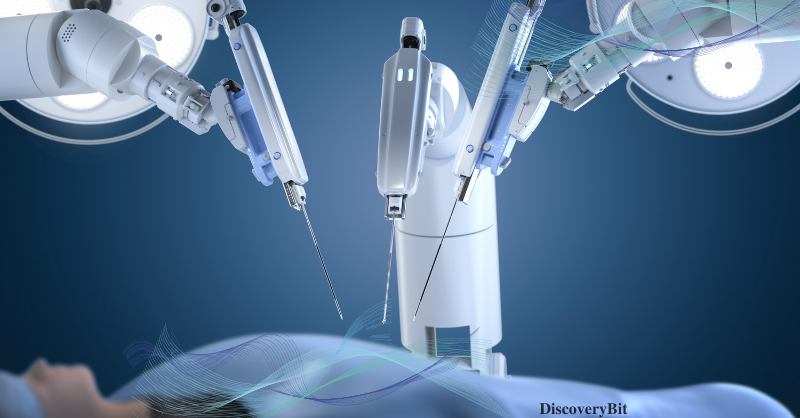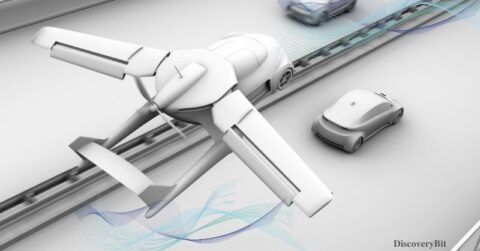Welcome to the frontier of medical marvels! The 21st century has unfurled a tapestry of groundbreaking discoveries, propelling us into an era where science and technology converge to redefine the landscape of healthcare. The journey through the latest medical breakthroughs is nothing short of awe-inspiring, showcasing the relentless pursuit of understanding, innovation, and healing.
In the realm of medical breakthroughs, the CRISPR gene editing tool stands as a sentinel, ushering in a new era of precision and possibility. Picture a world where our very genetic code becomes a canvas, and scientists wield the CRISPR tool like a brush, delicately sculpting the future of medicine. But that’s just the beginning.
From the intricate dance of immunotherapy combating cancer cells to the symphony of artificial intelligence orchestrating precise diagnostics, this exploration transcends the boundaries of conventional healthcare. We delve into a realm where liquid biopsies unveil mysteries with a drop of blood, where nanomedicine navigates the minuscule landscapes within, and where telemedicine bridges the gap between patients and care, transcending physical boundaries.
Join us as we unravel the narrative of these breakthroughs in medical science, each discovery a testament to human ingenuity. The canvas expands with personalized cancer vaccines, robotic surgeons conducting precise operations, and regenerative medicine reshaping the future of musculoskeletal care.
Embark on a journey through the top 37 medical breakthroughs of this century, where innovation dances hand in hand with compassion, and the latest medical discoveries paint a portrait of a healthier and more connected world. This is not just a discussion—it’s an invitation to witness the evolution of healthcare, where breakthroughs are not mere milestones but stepping stones into a future shaped by the brilliance of medical science
1) CRISPR-Cas9 Gene Editing:
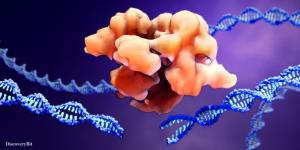 Enter the realm of genetic mastery with CRISPR-Cas9, a veritable magic wand in the world of medical breakthroughs. Imagine genes as sentences, and CRISPR as an editor, correcting typos and rewriting the story of genetic disorders. Since its debut, CRISPR has rewritten the narrative, offering a glimpse into a future where we edit genes with surgical precision.
Enter the realm of genetic mastery with CRISPR-Cas9, a veritable magic wand in the world of medical breakthroughs. Imagine genes as sentences, and CRISPR as an editor, correcting typos and rewriting the story of genetic disorders. Since its debut, CRISPR has rewritten the narrative, offering a glimpse into a future where we edit genes with surgical precision.
This breakthrough is not just a chapter; it’s an epoch in medical science, promising targeted treatments and potential cures for genetic ailments. Witness its grandeur—scientists, wielding CRISPR, made 13,200 genetic changes in a single living human cell, opening a gateway to engineering new species. Embryo editing in Oregon further echoes this breakthrough, deleting heart disease genes from DNA. CRISPR isn’t just rewriting genes; it’s rewriting our medical future
2) Immunotherapy for Cancer:
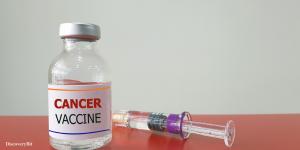 Step into the future of cancer treatment with immunotherapy—a revolutionary breakthrough in medical science. Imagine a personalized army within, trained to seek and destroy cancer cells. Since its inception, immunotherapy has transformed the battleground against cancer. With remarkable results, it activates the body’s immune system to wage a precise war on malignant cells.
Step into the future of cancer treatment with immunotherapy—a revolutionary breakthrough in medical science. Imagine a personalized army within, trained to seek and destroy cancer cells. Since its inception, immunotherapy has transformed the battleground against cancer. With remarkable results, it activates the body’s immune system to wage a precise war on malignant cells.
Data and statistics echo its triumph: a surge in survival rates, groundbreaking clinical trials, and FDA approvals. Immunotherapy isn’t just a breakthrough; it’s a beacon of hope, rewriting the script for cancer patients worldwide. Join the evolution in cancer care.
In relation, via collecting patients’ blood, CAR T-cell therapy customizers genetically modify immune cells to attack cancer cells. The modified blood is then infused back into the patient, marking a revolutionary approach in cancer treatment
3) Human Genome Project Completion:
 The Human Genome Project’s triumphant completion is a beacon illuminating medical breakthroughs. Picture this: every nuance of our genetic code unveiled, decoded, and laid bare. The Human Genome Project, concluded with grandeur, bestowed upon us the intricate map of our DNA, opening a Pandora’s box of possibilities.
The Human Genome Project’s triumphant completion is a beacon illuminating medical breakthroughs. Picture this: every nuance of our genetic code unveiled, decoded, and laid bare. The Human Genome Project, concluded with grandeur, bestowed upon us the intricate map of our DNA, opening a Pandora’s box of possibilities.
Since its finale, the floodgates of personalized medicine have swung wide, transforming healthcare landscapes. Dive into the statistics: 3 billion DNA base pairs deciphered, 20,000-25,000 genes revealed, and a profound leap in understanding genetic intricacies. This isn’t just a project closure; it’s a revelation rewriting the future of healthcare—one gene at a time. The Human Genome Project isn’t merely a chapter; it’s the prologue to a medical saga where breakthroughs echo through the strands of our very being
4) Stem Cell Therapies:
 The field of regenerative frontier of medical breakthroughs—a realm sculpted by the marvels of stem cell therapies. Picture this: cells with the power to transform, repair, and regenerate. Since the inception of stem cell research, a symphony of breakthroughs has unfolded, promising transformative therapies for a myriad of conditions. The timeline echoes with milestones—a dance of scientific prowess.
The field of regenerative frontier of medical breakthroughs—a realm sculpted by the marvels of stem cell therapies. Picture this: cells with the power to transform, repair, and regenerate. Since the inception of stem cell research, a symphony of breakthroughs has unfolded, promising transformative therapies for a myriad of conditions. The timeline echoes with milestones—a dance of scientific prowess.
Witness the power of stem cells, from groundbreaking research to clinical applications. Statistics speak volumes: countless lives touched, diseases confronted, and a horizon of possibilities expanding. Stem cell therapies aren’t just treatments; they’re whispers of medical evolution, where the body’s own cells become healers. Step into the future where breakthroughs converge with regeneration, reshaping the landscape of medicine—one cell at a time
5) Precision Medicine:
 Step into the era of personalized healing—Precision Medicine, an extraordinary breakthrough in medical science. Imagine a treatment plan as unique as your DNA, finely tailored to the nuances of your individuality. Since its inception, Precision Medicine has rewritten the narrative of healthcare, marrying genomics and data analytics to create bespoke medical solutions. The journey begins with the Human Genome Project’s completion, a cornerstone in decoding our genetic intricacies.
Step into the era of personalized healing—Precision Medicine, an extraordinary breakthrough in medical science. Imagine a treatment plan as unique as your DNA, finely tailored to the nuances of your individuality. Since its inception, Precision Medicine has rewritten the narrative of healthcare, marrying genomics and data analytics to create bespoke medical solutions. The journey begins with the Human Genome Project’s completion, a cornerstone in decoding our genetic intricacies.
Fast forward to today, where data analytics weave patterns through vast genetic landscapes, revealing personalized treatment avenues. Statistics attest to its impact: heightened treatment efficacy, reduced side effects, and improved patient outcomes. Precision Medicine isn’t just a breakthrough; it’s a revolution, where medical decisions dance with the rhythm of your genes. Join the symphony of personalized care, where the future of medicine is uniquely yours to embrace
6) AI in Healthcare:
 The future of healthcare—an era where Artificial Intelligence (AI) emerges as the maestro of medical breakthroughs. Picture this: a virtual brain orchestrating medical decisions with unprecedented accuracy and efficiency. Since its integration into healthcare, AI has evolved into a transformative force, reshaping diagnostics, drug discovery, and treatment customization. The timeline echoes with milestones—an exponential rise in AI applications, from interpreting medical images to predicting patient outcomes.
The future of healthcare—an era where Artificial Intelligence (AI) emerges as the maestro of medical breakthroughs. Picture this: a virtual brain orchestrating medical decisions with unprecedented accuracy and efficiency. Since its integration into healthcare, AI has evolved into a transformative force, reshaping diagnostics, drug discovery, and treatment customization. The timeline echoes with milestones—an exponential rise in AI applications, from interpreting medical images to predicting patient outcomes.
Dive into the statistics: enhanced diagnostic accuracy, accelerated drug development, and personalized treatment plans guided by AI’s analytical prowess. AI in healthcare isn’t just a technological leap; it’s a paradigm shift, where algorithms unravel medical mysteries, offering a glimpse into a future where precision and efficiency define patient care. Join the revolution—where the synergy of AI and healthcare propels us into a new era of medical brilliance
7) CRISPR-based Diagnostic Tools:
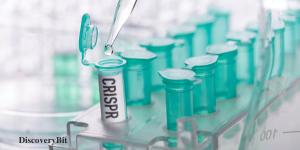 The revolutionary CRISPR, the virtuoso of gene editing, dons a new mantle—diagnostic prodigy. Imagine a tool so precise it can unveil diseases with surgical accuracy. Beyond its gene-editing prowess, CRISPR has metamorphosed into a diagnostic virtuoso, heralding a new era in medical breakthroughs. The timeline resonates with scientific ingenuity—a fusion of CRISPR’s precision and diagnostic prowess.
The revolutionary CRISPR, the virtuoso of gene editing, dons a new mantle—diagnostic prodigy. Imagine a tool so precise it can unveil diseases with surgical accuracy. Beyond its gene-editing prowess, CRISPR has metamorphosed into a diagnostic virtuoso, heralding a new era in medical breakthroughs. The timeline resonates with scientific ingenuity—a fusion of CRISPR’s precision and diagnostic prowess.
Statistics amplify its impact: heightened sensitivity, unparalleled specificity, and a paradigm shift in disease detection. CRISPR-based diagnostic tools aren’t just breakthroughs; they’re the heralds of a diagnostic renaissance, where diseases are unmasked with unprecedented clarity. Join the symphony of precision diagnostics, where CRISPR, once a gene sculptor, now becomes the virtuoso conductor of disease detection, revolutionizing the very fabric of medical diagnostics
8) 3D Printing in Medicine:
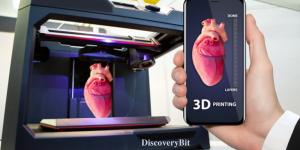 The 3D printing emerges as the artisan of medical breakthroughs. Imagine a technology capable of crafting custom solutions for the human body—a symphony of innovation reshaping medicine. Since its inception, 3D printing has transcended the ordinary, creating bespoke implants, prosthetics, and even organs with unparalleled precision. The timeline echoes with milestones—an era where a printer is not merely a machine but a healer.
The 3D printing emerges as the artisan of medical breakthroughs. Imagine a technology capable of crafting custom solutions for the human body—a symphony of innovation reshaping medicine. Since its inception, 3D printing has transcended the ordinary, creating bespoke implants, prosthetics, and even organs with unparalleled precision. The timeline echoes with milestones—an era where a printer is not merely a machine but a healer.
Statistics resonate: successful transplants with 3D-printed organs, customized implants seamlessly integrated, and prosthetics tailored to individual needs. 3D printing in medicine isn’t just a technological feat; it’s a revolution where healthcare becomes an art form, each creation a testament to the fusion of technology and humanity. Join the voyage into a future where medical breakthroughs unfold layer by layer, a canvas painted with the hues of innovation and compassion
9) mRNA Vaccines:
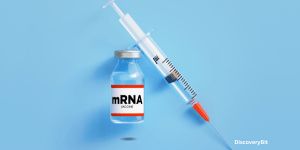 Step into the future of vaccination—an epoch where mRNA vaccines emerge as the vanguard of medical breakthroughs. Picture this: a revolutionary approach rewriting the script of vaccine technology. Since their inception, mRNA vaccines have propelled us into a new era, with COVID-19 vaccines at the forefront. The timeline resonates with unprecedented speed—from the lab to global deployment in record time.
Step into the future of vaccination—an epoch where mRNA vaccines emerge as the vanguard of medical breakthroughs. Picture this: a revolutionary approach rewriting the script of vaccine technology. Since their inception, mRNA vaccines have propelled us into a new era, with COVID-19 vaccines at the forefront. The timeline resonates with unprecedented speed—from the lab to global deployment in record time.
Statistics echo the impact: heightened efficacy, reduced development timelines, and a paradigm shift in vaccine strategy. mRNA vaccines aren’t just a shield against pandemics; they’re a testament to the agility of medical science. Join the revolution, where vaccines become blueprints of immunity, each mRNA dose a beacon illuminating the path to a safer, healthier world. This isn’t just a breakthrough; it’s a triumph of innovation, where mRNA vaccines redefine the landscape of preventive medicine
10) Neurostimulation Devices:
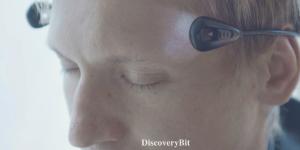 The electrifying realm of medical progress—Neurostimulation Devices, the trailblazers in treating neurological disorders. Imagine a device sending precise electrical impulses, a symphony rewiring the circuits of the brain. Since its advent, neurostimulation has revolutionized the approach to conditions like Parkinson’s disease. The timeline echoes with milestones—a dance of electrical impulses offering relief and hope.
The electrifying realm of medical progress—Neurostimulation Devices, the trailblazers in treating neurological disorders. Imagine a device sending precise electrical impulses, a symphony rewiring the circuits of the brain. Since its advent, neurostimulation has revolutionized the approach to conditions like Parkinson’s disease. The timeline echoes with milestones—a dance of electrical impulses offering relief and hope.
Dive into the statistics: improved motor control, enhanced quality of life, and a paradigm shift in neurological treatments. Neurostimulation devices aren’t merely breakthroughs; they’re the architects of a new era in neurology. Join the pulsating wave of progress, where electrodes become conduits of healing, reshaping the narrative for those grappling with neurological challenges. This isn’t just a breakthrough; it’s a spark that lights the path toward a future where neurological disorders meet innovation head-on.
In relation, the US Department of Defense funds research on brain implants, a new pacemaker device that boosts memory in patients with epilepsy, Parkinson’s, and Alzheimer’s. This breakthrough technology operates through electrically generated stimulations, targeting patients with neural problems and opening new avenues for memory recovery
11) Liquid Biopsy:
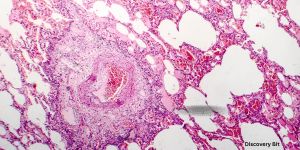 The Liquid Biopsy—a revelation in medical breakthroughs. Imagine a world where diseases unveil their secrets through a mere drop of blood, reshaping the diagnostic landscape. Since its inception, liquid biopsy techniques have emerged as the harbingers of change, offering a less invasive alternative to traditional biopsies. The timeline resonates with innovation—a symphony where a simple blood test becomes a diagnostic masterpiece.
The Liquid Biopsy—a revelation in medical breakthroughs. Imagine a world where diseases unveil their secrets through a mere drop of blood, reshaping the diagnostic landscape. Since its inception, liquid biopsy techniques have emerged as the harbingers of change, offering a less invasive alternative to traditional biopsies. The timeline resonates with innovation—a symphony where a simple blood test becomes a diagnostic masterpiece.
Statistics underscore its impact: heightened sensitivity, early cancer detection, and a transformative approach to disease diagnosis. Liquid biopsy isn’t just a technique; it’s a beacon of hope, heralding a future where diagnostics transcend the invasive, offering a gentler path to unveiling medical mysteries. Join the journey where breakthroughs flow seamlessly with blood, rewriting the narrative of disease detection—one liquid biopsy at a time
12) Optogenetics:
Optogenetics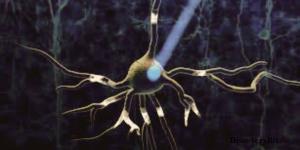 is a beacon in the realm of medical breakthroughs. Picture this: cells dancing to the tune of light, a symphony unveiling the secrets of neural circuits. Since its inception, Optogenetics has emerged as the virtuoso of cell control, offering unprecedented insights into the intricate dance of living tissue. The timeline resonates with groundbreaking discoveries—an era where light becomes the brush, painting the canvas of potential treatments for neurological disorders.
is a beacon in the realm of medical breakthroughs. Picture this: cells dancing to the tune of light, a symphony unveiling the secrets of neural circuits. Since its inception, Optogenetics has emerged as the virtuoso of cell control, offering unprecedented insights into the intricate dance of living tissue. The timeline resonates with groundbreaking discoveries—an era where light becomes the brush, painting the canvas of potential treatments for neurological disorders.
Statistics echo its impact: precise control of neurons, unraveling the mysteries of brain function, and a transformative approach to understanding and treating conditions like never before. Optogenetics isn’t just a technique; it’s a revolution, where light becomes the key to unlocking the secrets of the brain, paving the way for a future shaped by the brilliance of medical science. Join the journey into the light, where breakthroughs illuminate the path to understanding and healing
13) Nanomedicine:
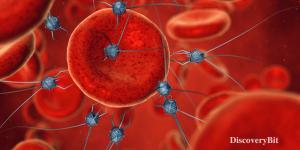 Nanomedicine—a frontier in medical breakthroughs where science unfolds at the molecular scale. Picture this: nanobots navigating the bloodstream, delivering targeted treatments with precision. Since its inception, nanomedicine has transcended the boundaries of conventional medicine, offering unparalleled avenues for drug delivery, imaging, and diagnostics. The timeline resonates with nanoscale marvels—an era where tiny particles wield immense healing power.
Nanomedicine—a frontier in medical breakthroughs where science unfolds at the molecular scale. Picture this: nanobots navigating the bloodstream, delivering targeted treatments with precision. Since its inception, nanomedicine has transcended the boundaries of conventional medicine, offering unparalleled avenues for drug delivery, imaging, and diagnostics. The timeline resonates with nanoscale marvels—an era where tiny particles wield immense healing power.
Statistics echo its impact: improved drug efficacy, enhanced imaging resolution, and a transformative approach to diagnostics at the cellular level. Nanomedicine isn’t just a breakthrough; it’s a voyage into the infinitesimal, where science manipulates the minuscule to unlock vast possibilities for medical innovation. Join the microscopic revolution, where breakthroughs unfold at scales unseen, rewriting the narrative of targeted and personalized medicine—one nanoparticle at a time
14) Telemedicine and Remote Monitoring:
 A digital revolution with Telemedicine and Remote Monitoring—an unprecedented breakthrough reshaping the healthcare landscape. Picture this: medical consultations at your fingertips, and healthcare monitoring from the comfort of your home. Since its integration, technology has become the bridge connecting patients and care, heralding a new era in medical breakthroughs. The timeline echoes with milestones—an exponential rise in telehealth platforms, remote patient monitoring devices, and a paradigm shift in healthcare accessibility.
A digital revolution with Telemedicine and Remote Monitoring—an unprecedented breakthrough reshaping the healthcare landscape. Picture this: medical consultations at your fingertips, and healthcare monitoring from the comfort of your home. Since its integration, technology has become the bridge connecting patients and care, heralding a new era in medical breakthroughs. The timeline echoes with milestones—an exponential rise in telehealth platforms, remote patient monitoring devices, and a paradigm shift in healthcare accessibility.
Statistics amplify its impact: expanded reach to underserved areas, reduced healthcare disparities, and enhanced patient engagement. Telemedicine isn’t just a service; it’s a transformative force, breaking down geographical barriers and ushering in a future where healthcare is accessible to all. Join the digital healthcare revolution, where breakthroughs are delivered through screens, connecting patients to a world of medical possibilities
15 ) Bionic Prosthetics:
 The age of bionic marvels—Advancements in prosthetic limbs, a symphony of medical breakthroughs transforming the lives of amputees. Imagine limbs responding to neural signals, a dance of technology and biology. Since its inception, bionic prosthetics have evolved into more than just replacements; they are extensions of the human body, restoring not just functionality but dignity. The timeline resonates with milestones—a leap from traditional prosthetics to bionic wonders.
The age of bionic marvels—Advancements in prosthetic limbs, a symphony of medical breakthroughs transforming the lives of amputees. Imagine limbs responding to neural signals, a dance of technology and biology. Since its inception, bionic prosthetics have evolved into more than just replacements; they are extensions of the human body, restoring not just functionality but dignity. The timeline resonates with milestones—a leap from traditional prosthetics to bionic wonders.
Statistics underscore their impact: heightened mobility, increased functionality, and a paradigm shift in prosthetic design. Bionic prosthetics aren’t just breakthroughs; they’re the architects of a future where limb loss is not the end but a beginning of a new chapter—a testament to the fusion of humanity and technology. Join the bionic revolution, where breakthroughs redefine the possibilities of a life beyond amputation
Tags: breakthrough in medical science latest medical breakthroughs latest medical discoveries medical breakthroughs

